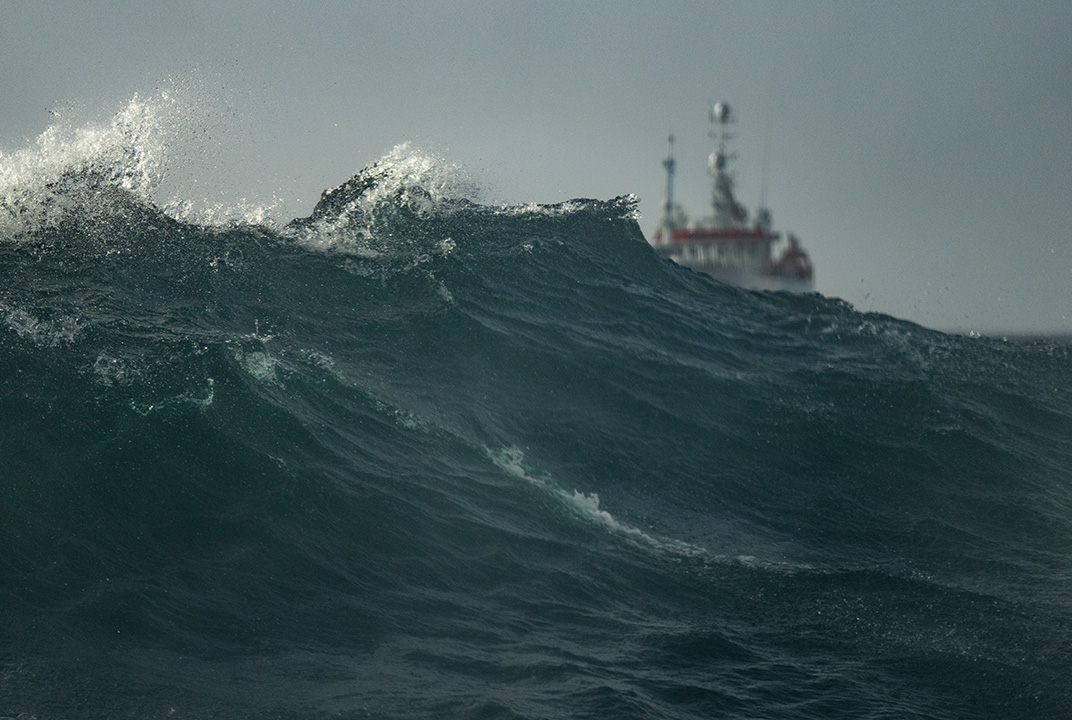Insight | Celebrating 45 Years of Maritime Safety and Communication Excellence: IMSO and Inmarsat
Celebrating 45 Years of Maritime Safety and Communication Excellence: IMSO and Inmarsat
- As this year marks the 45th anniversary of both the International Mobile Satellite Organization (IMSO) and Inmarsat, it's a moment to reflect on the pivotal roles that both organisations have played in enhancing global maritime safety and communication.
The beginnings
The journey began with the visionary idea of using geosynchronous satellites for communication, a concept brought to life with the launch of the first geostationary satellite, Syncom 3, in 1964. By 1976, extensive experimental trials of ship-to-shore and shore-to-ship satellite links had been conducted, and a diplomatic conference drew together 26 governments to address the safety and commercial communication needs of the shipping industry.
The result was an international convention that established the Intergovernmental organization (IGO) named International Maritime Satellite Organization, which back then was shortened to INMARSAT. This INMARSAT was created with the mission to address the urgent communication needs of the maritime industry, enhance safety and support the prosperity of shipping worldwide.
When Inmarsat was privatised in 1999 to become the commercial operation it is today, the INMARSAT Convention was amended to become the International Mobile Satellite Organization (IMSO) to continue intergovernmental cooperation via a public service agreement with the newly formed Inmarsat Ltd. Today, IMSO’s role includes overseeing certain public communication services facilitated by mobile satellite communication systems, such as those provided by Inmarsat that support the Global Maritime Distress and Safety System (GMDSS).
As Director General of IMSO, Laurent Parenté puts it “IMSO and Inmarsat have grown from the same root. We were born out of international cooperation. Our joint aim has always been to maintain the highest levels of safety at sea using satellite communication.”
Revolutionising maritime safety together
Since then, IMSO and Inmarsat have maintained a strong partnership. Together, we regularly conduct contingency exercises to ensure that our IMO-recognised GMDSS services are available 99.9% of the time. In addition, we also attend public service committee meetings and maintain consistent communication. Through these collaborative efforts, we continue to enhance the reliability of GMDSS services via our satellite constellation, now as part of Viasat, continuously advancing the capabilities of maritime satellite communications.
For instance, here at Inmarsat, we have developed our Fleet Safety service to offer greater flexibility in the types of services and delivery options available. This includes improved shore-side services for Maritime Safety Information (MSI) providers and Rescue Coordination Centres (RCC). Access to these services is now independent from Land Earth Stations, and instead uses the Inmarsat Maritime Safety Servers, which provide a single interface for GMDSS and Inmarsat safety services. Additionally, the new Fleet Safety solution includes new features such as instant messaging and chat room, facilitating direct communication between the vessel in distress, nearby vessels and the RCCs, providing crucial support during distress situations.
Looking forward
The evolution of maritime satellite services has significantly enhanced maritime safety services. And as the maritime communications landscape continues to evolve, so too does the relationship between IMSO and Inmarsat. When asked about his thoughts on what those future developments might look like, the Director General indicated obvious dramatic changes in the demand for products and services but also potential new requirements for network governance of Maritime Autonomous Surface Ships (MASS). He also highlighted the role that IMSO can play using its status as an IGO, which could be instrumental in addressing issues like space congestion or the protection of the radiocommunications spectrum for GMDSS services purposes. And also, the need to preserve satellite communications public services in general.
Unending commitment
“One thing is certain, the foundational mutual trust and cooperation that define the relationship between IMSO and Inmarsat will persist as Inmarsat remains a strong provider of satellite communications services for the Global Maritime Distress and Safety System,” said the Director General.
“Ensuring that Inmarsat remains willing and able to provide this service is core to the vision and mission of IMSO. A strong relationship of understanding and trust is vital to enable IMSO the access it needs to carry out this mission.; it is core to my work and that of the IMSO Directorate,” he continued.
The ongoing commitment shown by both Inmarsat Maritime and IMSO, demonstrates a steadfast commitment to maritime safety, security and environmental protection in the face of the challenges of the modern world. As we celebrate this milestone, the legacy of IMSO and Inmarsat stands as a testament to our enduring impact on maritime communication and safety.


